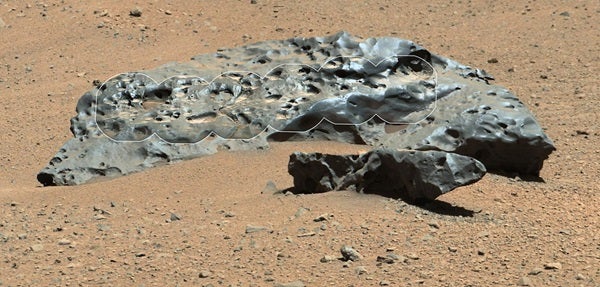This view combines a series of high-resolution circular images taken by the Remote Micro-Imager (RMI) of Curiosity’s Chemistry and Camera (ChemCam) instrument with color and context from rover’s Mast Camera (Mastcam). The component images were taken during the 640th martian day (sol) of Curiosity’s work on Mars — May 25, 2014.
The imaging shows angular-shaped cavities on the surface of the rock. One possible explanation is that they resulted from preferential erosion along crystalline boundaries within the metal of the rock. Another possibility is that these cavities once contained olivine crystals, which can be found in a rare type of stony-iron meteorites called pallasites, thought to have been formed near the core-mantle boundary within an asteroid.
Iron meteorites are not rare among meteorites found on Earth, but they are less common than stony meteorites. On Mars, iron meteorites dominate the small number of meteorites that have been found. Part of the explanation could come from the resistance of iron meteorites to erosion processes on Mars.










